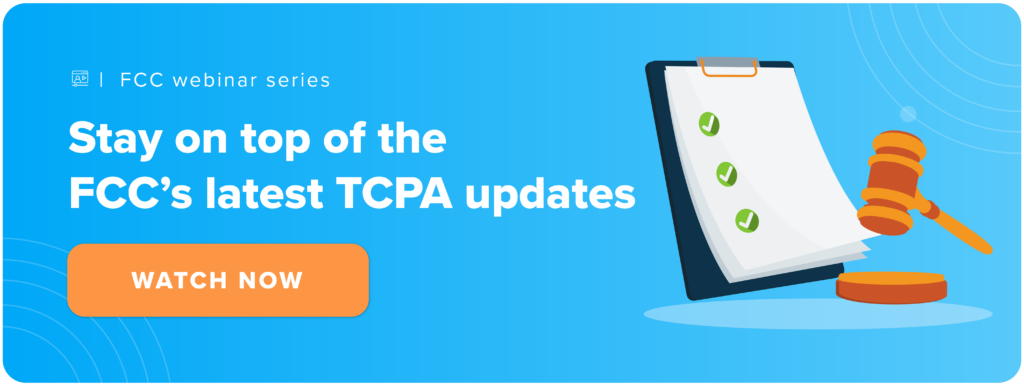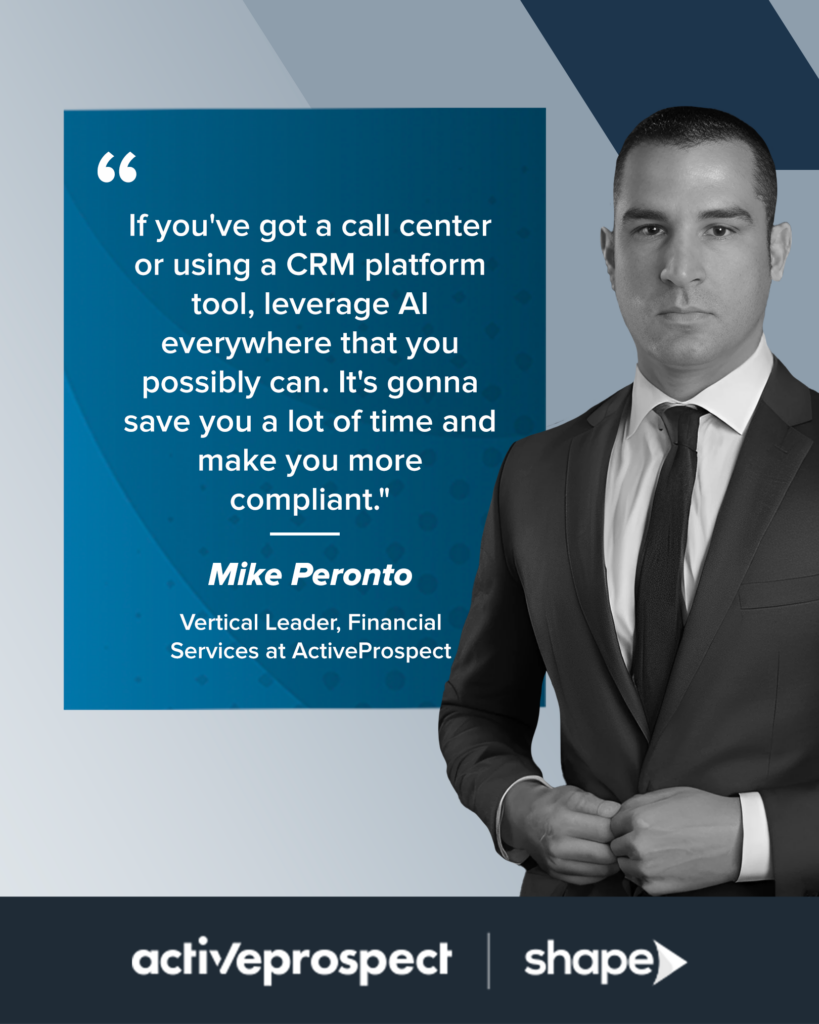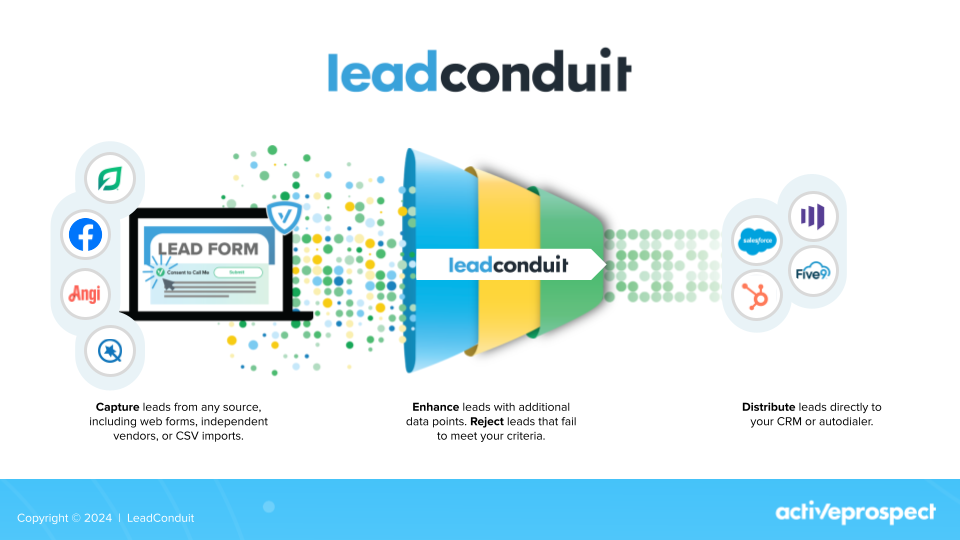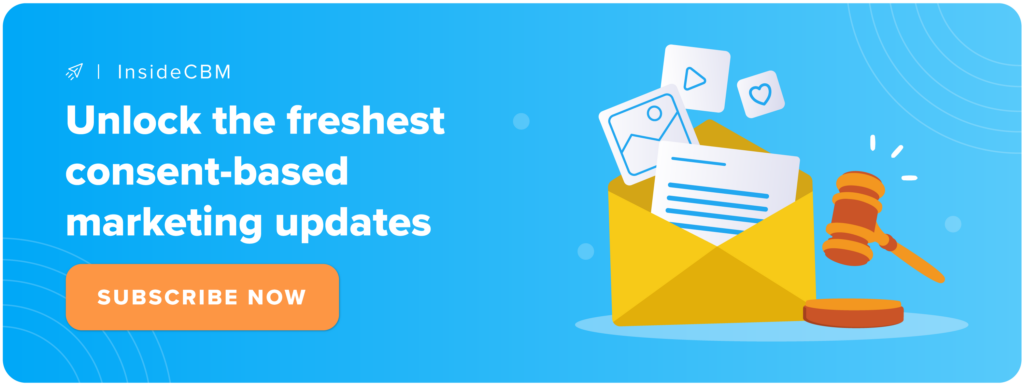Harnessing CRM & AI to navigate performance marketing

In our recent webinar “Shaping CRM success: The key to compliance and growth,” our Vertical Leader of Financial Services, Michael Peronto, and the Chief Growth Officer at Shape, Scott Payne, delved into the transformative potential of integrating artificial intelligence (AI) into Customer Relationship Management (CRM) systems.
They also addressed recent regulatory changes to the Telephone Consumer Protection Act (TCPA) that have struck the lead generation and performance marketing industries, and the upcoming FCC one-to-one consent updates.
Some key dates to keep in mind
February 2, 2024
The Federal Communications Commission (FCC) has mandated that AI-generated voice calls require prior express written consent, which has been in effect since February 2.
October 15, 2024
An update to the Telemarketing Sales Rule (TSR) regarding the storage and recording of call details went live on October 15.
January 27, 2025
The FCC’s one-on-one consent update is scheduled for January 27, 2025, so it’s time to start preparing and updating your systems.
April 11, 2025
A new update is set for April 11, 2025, introducing universal consent revocation. This means if a consumer opts out through one channel, they opt out through all channels, significantly impacting contact strategies and CRM technologies. We encourage you to stay informed about this upcoming April 2025 update.

Unlocking AI potential in CRM
When considering AI in CRM, Michael believes we’re only “scratching the surface.” Many companies are innovating with various AI tools, and he believes AI has immense potential for compliance. Imagine reviewing every text, email, and call, and then subsequently transcribing, scoring, and sending notifications to managers for compliance purposes. But it won’t stop at compliance; according to Michael, AI will evolve to enhance sales within CRM.
For instance, it could listen to a sales call, provide real-time insights, summarize conversations, or even schedule appointments and send reminders. The possibilities are endless. While AI has been a hot topic, we’re now seeing significant investment and effort directed towards CRM and contact center applications.
Another benefit, as Michael highlights, is the efficiency gained through AI, not only for tasks like project planning but especially in CRM and contact centers. Many processes that are currently manual can now be driven by AI. For instance, managers would manually select calls from reports, listen to each one – which could last up to an hour – and then subjectively score them for compliance. AI significantly reduces the time required to complete these tasks and performs them with greater accuracy.

Connecting leads to CRM: The role of middleware solutions
A middleware is a software that facilitates communication and data management between various applications, systems, or components within a network. Acting as a “bridge,” middleware supports integration, messaging, security, and interoperability among applications that might use different protocols or run on different platforms.
Using a middleware is especially useful in modern distributed architectures and cloud computing, allowing organizations to integrate new applications with legacy systems, manage data flows, and maintain flexibility across hybrid and multi-cloud environments.
Your middleware plays a pivotal role in various contexts, as Scott has experienced with inbound calls. Much like a route planner that efficiently maps deliveries, the middleware determines where to route calls and which phone system handles them.
For instance, when a call comes in, the middleware determines where to route it and which phone system handles it. In a large customer retention operation, the middleware not only routes the call but can also check for existing records within your database and appends relevant data.
When dealing with inbound leads from websites, direct mail, or purchased sources, the middleware checks and enhances data before it enters the system. This includes appending useful information for routing decisions or providing salespeople with comprehensive details, enhancing the customer experience.
Using a middleware is essential for tasks like Do-Not-Call (DNC) checks, litigator scrubs, data deduplication, and managing opt-outs. It ensures that leads are not duplicated, preventing multiple salespeople from contacting the same customer. Ultimately, as Scott explains, middleware is crucial for maintaining high lead conversion rates and overall business efficiency.
As Michael proceeds to explain, when considering a middleware solution, you might think about building it in-house, but that requires substantial technical resources to create a system capable of ingesting and processing data. Alternatively, you can opt to purchase a tool that seamlessly integrates with your existing platforms.
Append, enhance, filter, and reject leads with LeadConduit

LeadConduit, one of ActiveProspect’s products, is a versatile platform that sits between your lead sources, such as landing pages and social media, and your CRM system. It offers numerous capabilities, including direct integrations with specific lead sources, lead acquisition, real-time bidding, and suppression list management to prevent duplicate records.
In terms of compliance, LeadConduit provides a comprehensive suite of tools. It can perform known litigator checks to prevent potential legal issues, conduct general fraud checks, and retain TrustedForm certificates to document consent, which is a legal requirement under the TCPA. Additionally, it can verify one-to-one consent with TrustedForm Verify to comply with upcoming regulations.
Other features include deduplication, phone and email validation with rejection options, litigator scrubs, and lead scoring. In essence, LeadConduit acts as a robust filter for your lead data. It processes leads through various checks and enhancements before posting them to the appropriate place within your CRM platform.

How to overcome the compliance challenges of distributed retail models
Let’s move on to an emerging topic in the compliance arena: companies with a distributed retail model. As Michael explains, these organizations have a corporate headquarters and numerous branches, with some branches conducting their own marketing and even signing contracts with third-party providers. According to Michael’s experience, this model fosters entrepreneurship but also presents significant compliance challenges that are difficult to monitor.
In light of upcoming compliance changes, these companies must have critical discussions about the tools and practices they’ll permit their branches to use. The goal is to support the branches overall success while adhering to new compliance requirements.
Not all companies currently have a CRM platform that has robust branch model compliance capabilities as Shape Software. To assist, we’ve compiled a list of strategies to help maintain compliance within a branching environment.
Regular communications
Ensure regular communication about compliance to your users and managers. Many programs falter by only addressing compliance during onboarding, without ongoing reminders.
Webinars
Michael suggests leveraging webinars to blend sales and compliance topics. Invite high-performing branch managers to share insights while integrating essential compliance information.
Continuous training
Implement continuous training.
Internal intranet
If tech resources allow it, create an internal portal with compliance-related videos and guides for easy reference.
Pre-approved list of compliance vendors
Provide branches with a pre-approved list of vendors, marketing companies, and tools to streamline their operations and ensure compliance.
Regular secret shops
Lastly, an intriguing suggestion from Michael is to “secret shop” your own company. Regularly test your platforms and landing pages to understand the user experience and ensure all communications align with your compliance standards. You might uncover surprising insights.
Scott’s strategy involves a 10-day tracking period where you observe all incoming calls and emails without responding. On the 10th day, call back the numbers that reached out to you, express initial interest, propose an enticing deal, then mention you need to reschedule for the next day at 2 PM. Monitor the follow-up over the next 10 days.
According to Scott’s experience, 85% of the time, there’s no follow-up call. Of the 15% that do call back, half are more than an hour late. Rarely do calls come on time or within a reasonable window.
This “secret shop” method can vary. You might start an application and stop at the social security number step, submit a lead over the weekend or late at night, and observe the responses. The key is to set clear expectations for your sales team’s follow-up protocol and work towards improving it based on your findings.

Takeaways
Here are some key takeaways from our recent webinar “Shaping CRM success: The key to compliance and growth:”
- The FCC one-to-one consent update will require businesses to obtain prior express written consent from consumers in a one-to-one manner before contacting them.
- Middleware is crucial in managing leads, ensuring compliance, and improving efficiency.
- AI can be used to enhance compliance, improve efficiency, and provide insights for better decision-making.
- CRM plays a crucial role in maintaining compliance at the branch level, especially in a distributed retail model.
- Regular secret shopping can help businesses uncover compliance issues and improve customer experience.
As always, ActiveProspect is here to help you navigate the compliance landscape with confidence. Watch the entire episode now and subscribe to InsideCBM to stay on top of the latest consent-based marketing insights, updates, and trends.

DISCLAIMER: This page and all related links are provided for general informational and educational purposes only and are not legal advice. ActiveProspect does not warrant or guarantee this information will provide you with legal protection or compliance. Please consult with your legal counsel for legal and compliance advice. You are responsible for using any ActiveProspect Services in a legally compliant manner pursuant to ActiveProspect’s Terms of Service. Any quotes contained herein belong to the person(s) quoted and do not necessarily represent the views and/or opinions of ActiveProspect.

